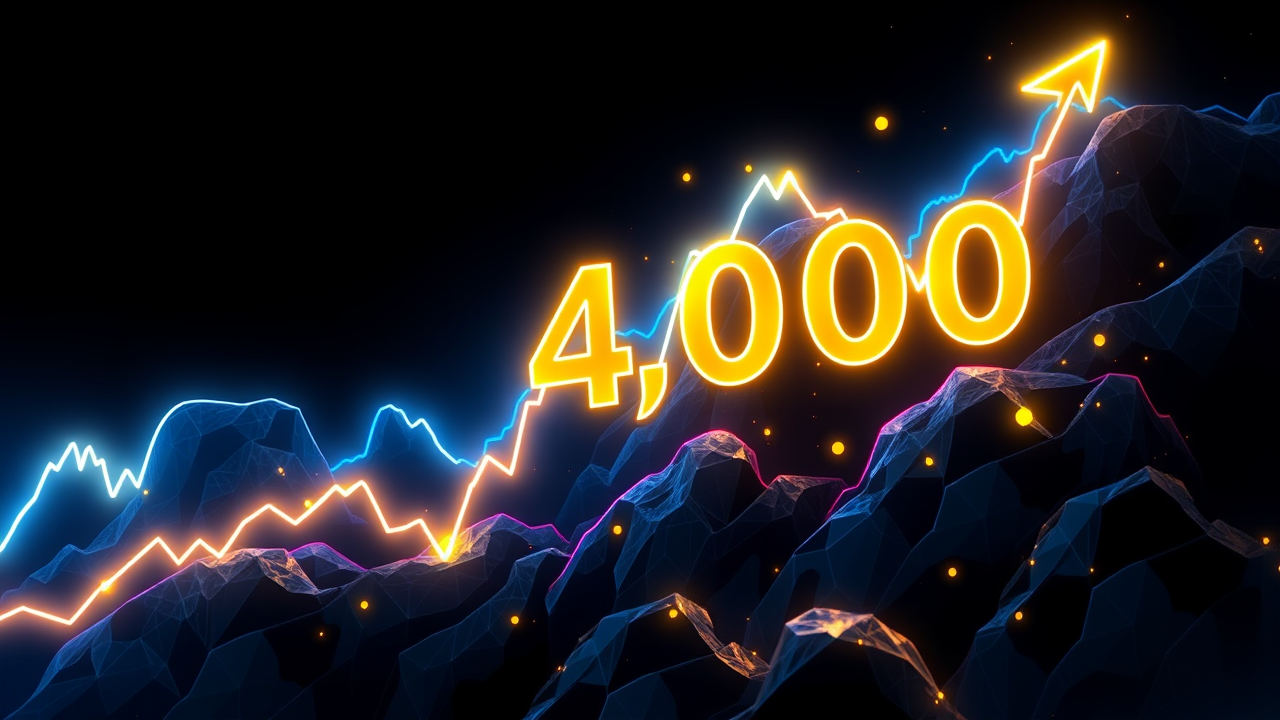Gold Price Surpasses $4000 Amid Uncertainty
The gold market has erupted into a historic rally, decisively shattering the $4,000 per ounce barrier in a move that has sent shockwaves through global financial circles and left seasoned Wall Street veterans scrambling to recalibrate their models. This isn't merely a bullish tick; it's a tectonic shift, a profound vote of no confidence in the conventional financial system, driven into overdrive by a uniquely American crisis: a US government shutdown that has thrown a cloak of opacity over the world's most critical economic data.The very machinery of market intelligence—the steady, predictable drumbeat of employment reports, inflation figures, and GDP estimates from the Bureau of Labor Statistics and the Commerce Department—has ground to a halt, leaving investors and central bankers to navigate by dead reckoning in a stormy sea of uncertainty. In this information vacuum, where the Federal Reserve's next move becomes an agonizing guessing game, gold's ancient allure as a non-sovereign, apolitical store of value burns brighter than it has in generations.We are witnessing a classic flight to quality, but on a scale amplified by digital-era panic and geopolitical fractures. Consider the context: for over a decade, markets have been conditioned by the Fed's forward guidance, a carefully choreographed dance of data-dependent policy.Now, with the data spigot turned off, that entire framework collapses. Traders are left staring at blank screens where key indicators should be, forcing them to price in a spectrum of worst-case scenarios, from a hidden surge in inflation that would force the Fed to hike rates aggressively to a sudden, sharp economic contraction it would be powerless to counter in time.This paralysis echoes the chaotic periods of the 2013 and 2018 shutdowns, but the stakes are now exponentially higher with inflation only recently receding from forty-year highs and interest rates at a restrictive level. The silence from Washington is deafening, and each day it persists adds another layer of risk premium into the gold price.Beyond the immediate catalyst, this breach of $4,000 is the culmination of a powerful, multi-year trend. Central banks, particularly those in emerging economies like China, India, and Turkey, have been on a relentless buying spree, diversifying their reserves away from the US dollar in a strategic move often described as 'de-dollarization.' Their motivations are clear: to insulate their economies from US financial sanctions and the perceived weaponization of the dollar, as starkly demonstrated in the response to the Ukraine conflict. This institutional demand provides a formidable floor under the gold market, transforming it from a speculative asset into a foundational element of a new, multipolar monetary order.Meanwhile, the retail investor, armed with easy-access gold ETFs and digital gold products, has piled in, driven by a pervasive sense of unease about the sustainability of public debt levels in the US and other Western nations. The math is terrifyingly simple: when debt-to-GDP ratios soar past 120%, the paths to solvency are either politically painful austerity, financially repressive financial repression that erodes savings, or outright currency debasement through inflation.Gold, with its finite supply and 5,000-year track record, is the ultimate hedge against the latter. Warren Buffett, despite his famous skepticism of the metal's productivity, would surely appreciate the cold, hard calculus of its appeal in an era of fiscal profligacy.The technical breakout above $4,000 is therefore not just a line on a chart; it is a signal flare, warning of deep structural stresses. It suggests that the market is beginning to price in a future where central banks, particularly the Fed, are forced to capitulate on their inflation fight and return to easier monetary policy to service the crushing weight of sovereign debt, a scenario that would be profoundly bullish for hard assets.The consequences of this new gold paradigm are vast. It will pressure central banks to reconsider the role of gold in their own reserves, potentially triggering a self-reinforcing cycle of buying.It undermines the dominance of the US dollar as the world's sole reserve currency, accelerating the move toward a basket of reserve assets. For the average person, it's a stark reminder of the fragility of paper wealth and the enduring value of tangible assets in a world drowning in digital promises and fiat currency. As the shutdown drags on, the silence from the data front will only grow louder, and the gleam of gold, that timeless barometer of fear and faith, will likely shine ever brighter.
Latest News
Wall Street staged a decisive rebound on Monday, shaking off the vertigo-inducing plunge from Friday’s session as President Donald Trump dialed back his
4 minutes ago0 comments
In a move that reverberated across the canyons of Wall Street, Goldman Sachs has strategically positioned itself at the epicenter of the burgeoning private
44 minutes ago0 comments
In a move that feels ripped straight from the playbook of 'Rich Dad Poor Dad,' the majority owners of Grindr are executing a high-stakes financial pivot,
3 hours ago1 comments
In a development that caught many market watchers off guard, China's export engine roared back to life in September, posting a surprising 5.
10 hours ago5 comments
The persistent hum of the global financial machine, with its intricate web of sovereign debt, bond yields, and central bank policies, has long dictated the
15 hours ago7 comments
Hong Kong is strategically positioning itself to become North Asia's preeminent hub for Islamic finance, a calculated move that signals a profound shift in the
15 hours ago4 comments
Paraguay is quietly executing a masterplan that could radically redraw the technological map of South America, a bold gambit predicated on a single, formidable
1 day ago5 comments
The looming autumn budget from Chancellor Rachel Reeves has placed Britain's gambling industry on high alert, with debt-laden operator Evoke—the parent company
1 day ago3 comments
It’s quiet here...Start the conversation by leaving the first comment.
